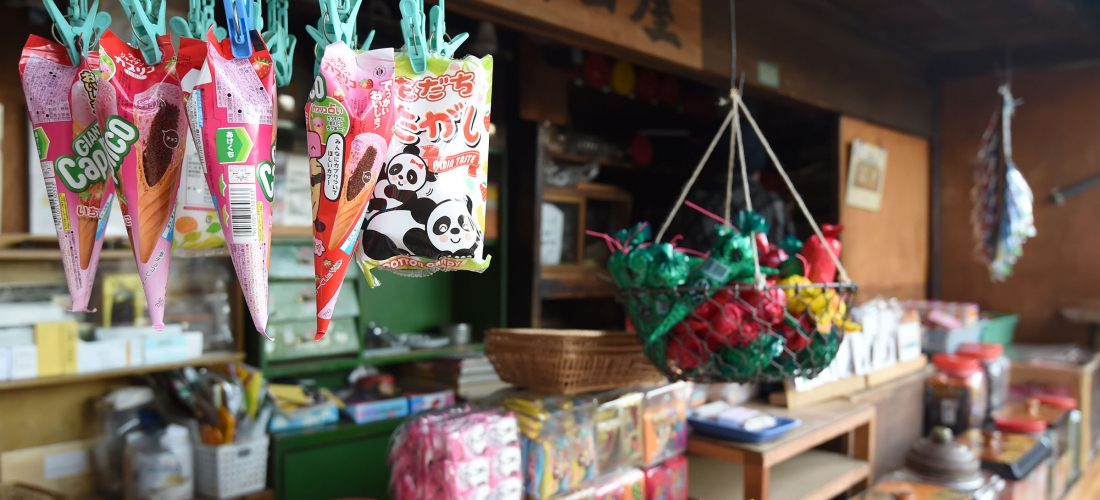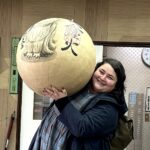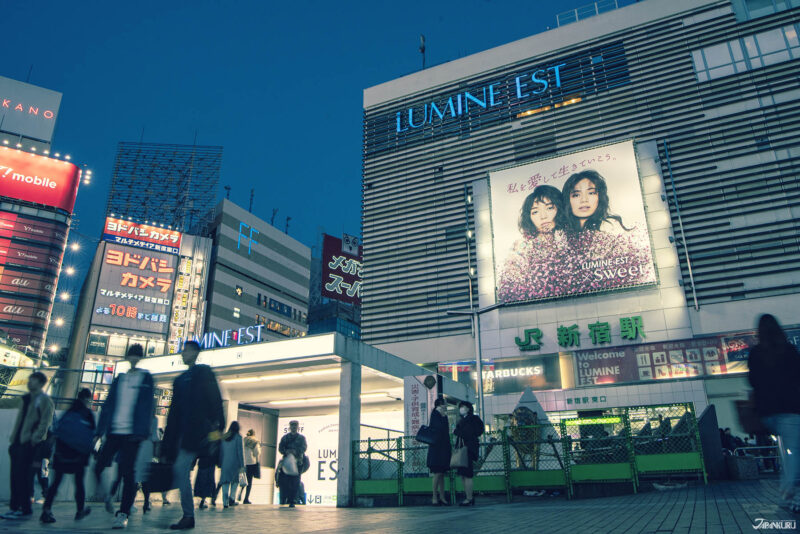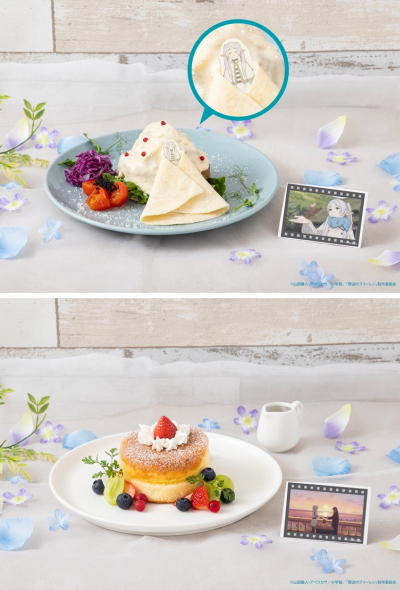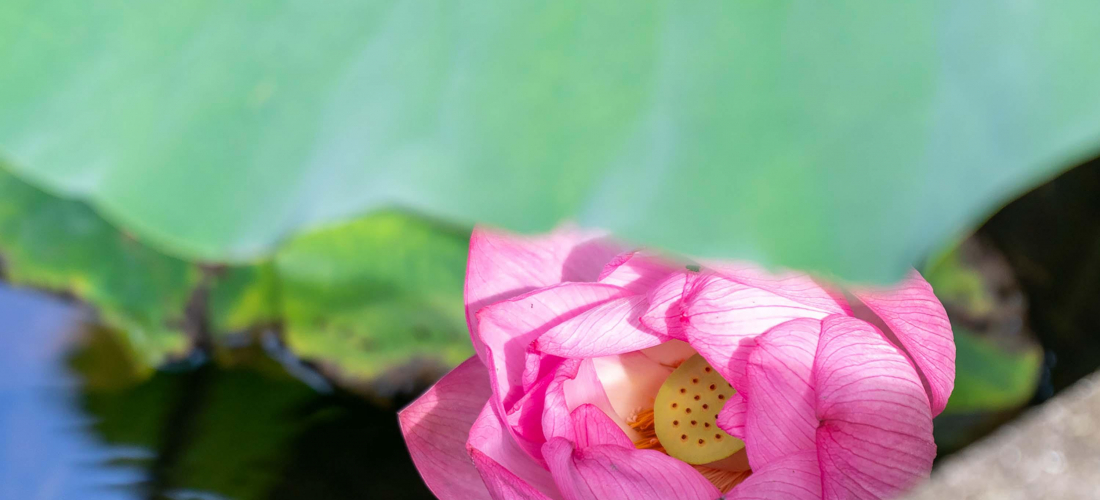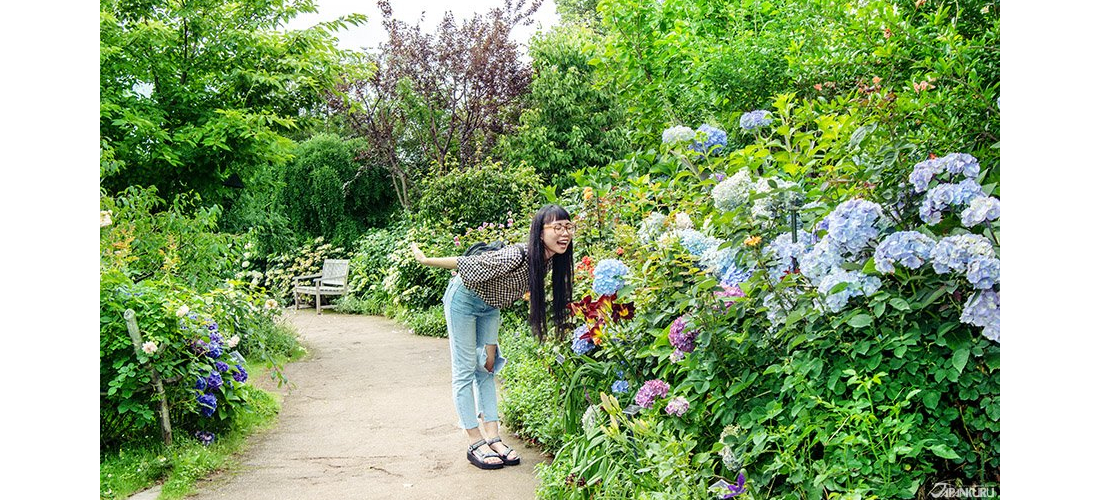See local Tokyo life in Arakawa: classic market streets, peaceful gardens, retro cafes, friendly local pubs, and more!
CONTENTS
A Day in Arakawa
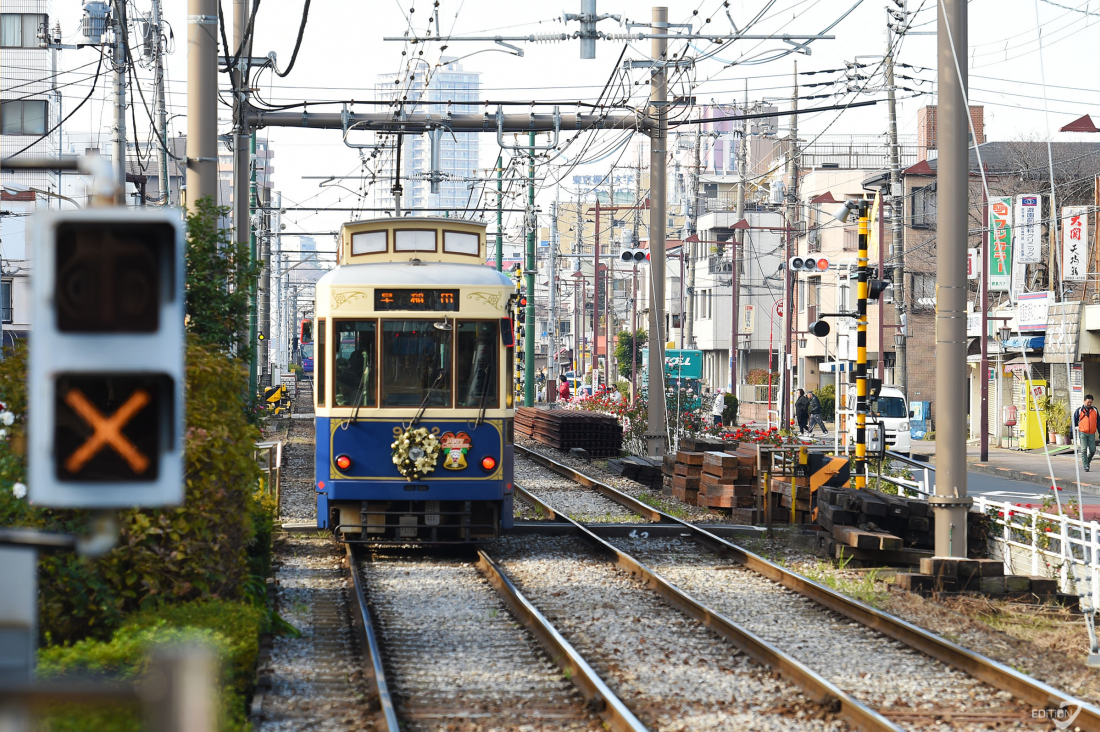
For most travelers who visit Tokyo, it’s a city of big flashy billboards, tall buildings, and intimidating crowds rushing in all directions, but locals know that those things don’t even begin to cover the city at large. Hop on a train and head just one or two stops away from the busier areas like Shinjuku or Shibuya, and you’ll find a quieter side of Tokyo, where the retro remnants of Japan’s Showa period (1926-1989) are still strong, and life feels just the tiniest bit more laid back. Today we’ll be taking a look at one of those areas, a whole “ward” or “city” within Tokyo called Arakawa. This area of the city is still central, and there’s no doubt that it’s still a part of the big, busy metropolis of Tokyo, but precisely because it’s less of a tourist spot, Arakawa still has a little bit of retro charm and down to earth realness that you won’t find in Tokyo’s entertainment districts. Spend a day away from the crowds and follow us to visit Arakawa!
Take the Tram!
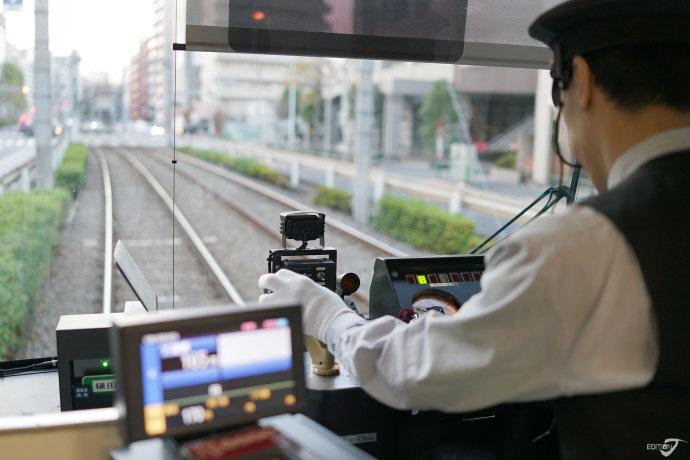
The most convenient, and perhaps most authentic, way to get around Arakawa Ward is via tram. The Tokyo tram system once reached its many tendrils throughout the whole city, with almost 100 different lines run by a handful of different operators, but these days only one line operated by Tokyo Toden is still left running: the Toden Arakawa Line, also called the “Tokyo Sakura Tram.” In modern Tokyo, this lone unconnected streetcar survivor takes an interesting route, running right through the center of Arakawa Ward before swinging south to reach the very edge of the Shinjuku area, and while it might not be part of a massive network anymore, it’s still the best way to explore Arakawa.
For an especially convenient deal, you can pick up a Toei One-Day Pass (都営まるごときっぷ 1 日乗車券/Toei Marugoto Kippu), which gives you free rein over the Toei Subway lines (Oedo, Asakusa, Mita, Shinjuku), Toei buses, the Nippori-Toneri Liner, and of course the Toei Tram Toden Arakawa Line, all for 700 yen (or 350 for kids). You can pick up a pass all over Tokyo, including at any Toei subway or liner station.
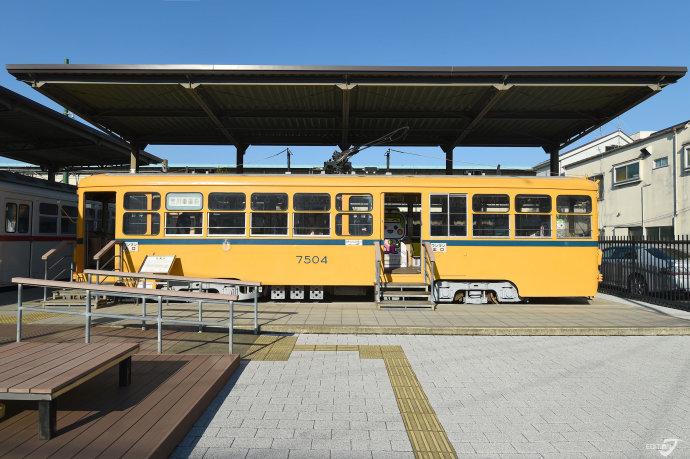
One last tip: If you fall in love with Tokyo’s only tram while you’re in Arakawa, make sure you stop by the Toden Omoide Hiroba (都電おもいで広場/Toden Memorial Square) at Arakawa-shakomae Station to see some of the old tram cars that used to traverse Tokyo, types 7500 and 5500. On weekends and holidays, the trams are even opened up so people can go inside and take a look.
Feel the Arakawa Vibes
Joyful Minowa Shopping Street (ジョイフル 三ノ輪商店街)
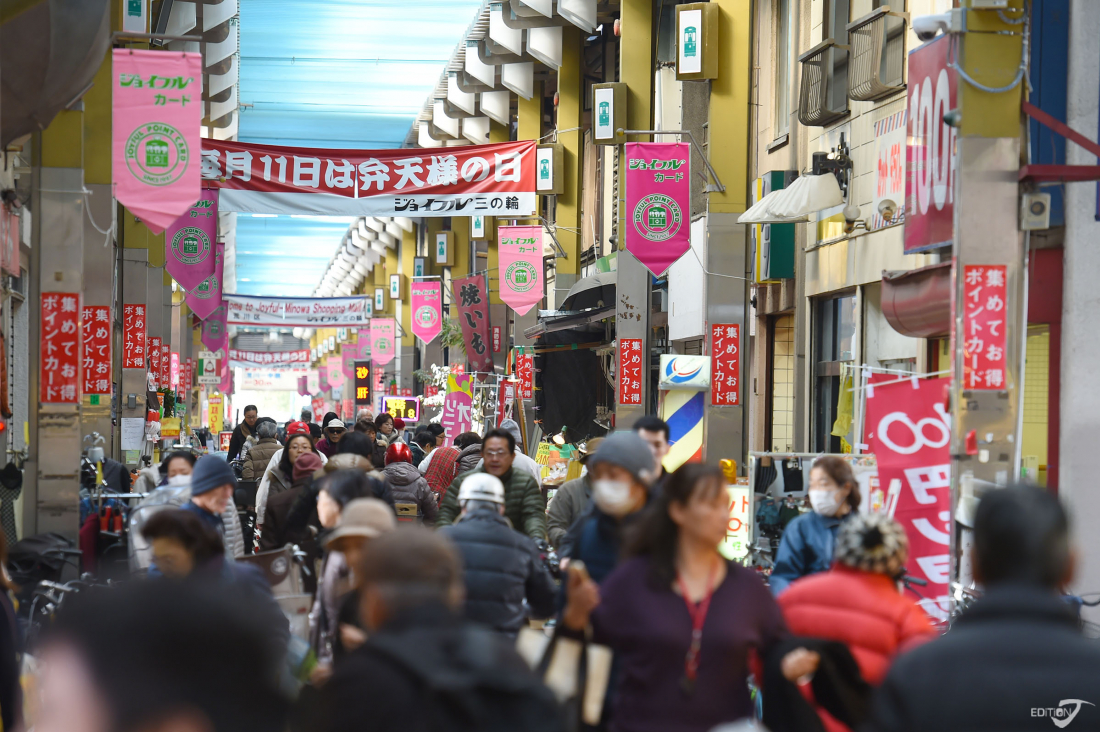
Travelers who visit Japan are sometimes frustrated to find that Tokyo doesn’t really have the kind of open markets that are so common throughout other parts of Asia, but the obvious alternative is the ubiquitous “shotengai” (商店街) shopping street, and the Joyful Minowa shopping arcade is a prime example. Humming with a steady stream of local residents and still decorated with endearingly dated ornamentation, this classic Japanese shopping street is made for everyday errands, with affordable grocery stores and a shop selling custom-made hanko (name stamps). Look around and you’ll find small izakayas where everyone sits at the counter, along with some intriguing additions like a sword shop. It’s a great place to look for hidden treasures, and it’s right next to the tram’s terminal station, Minowabashi!
Joyful Minowa Shopping Street (ジョイフル 三ノ輪商店街)
1-18-5 Minamisenju, Arakawa City, Tokyo
Arakawa Yuen Amusement Park (あらかわ遊園)

Arakawa’s beloved local amusement park, Arakawa Yuen first opened back in the 1950s, offering thrilling rides, a petting zoo, fishing ponds, and more. In 2018, Arakawa Yuen closed for massive park-wide renovations and construction, and since its grand reopening in 2022, the little amusement park has resumed its place as a favorite Arakawa destination. The scale and the attractions available aren’t quite on the same level as somewhere like the Tokyo Disney Resort, but neither are the lines, the crowds, or the prices. Get off the tram at Arakawayuenchi-mae and stop in to ride the rollercoaster and pet a capybara or two!
Arakawa Yuen Amusement Park (あらかわ遊園)
6-35-11 Nishiogu, Arakawa City, Tokyo
Hours: 9:00 – 17:00 (closed Tuesdays, except holidays)
Admission: adults 800 yen | children ~400 yen
Day Pass: adults 1,800 yen | children ~1,000 yen
Official Website (jp)
Sugamo Jizodori Shopping Street (巣鴨地蔵通り商店街)
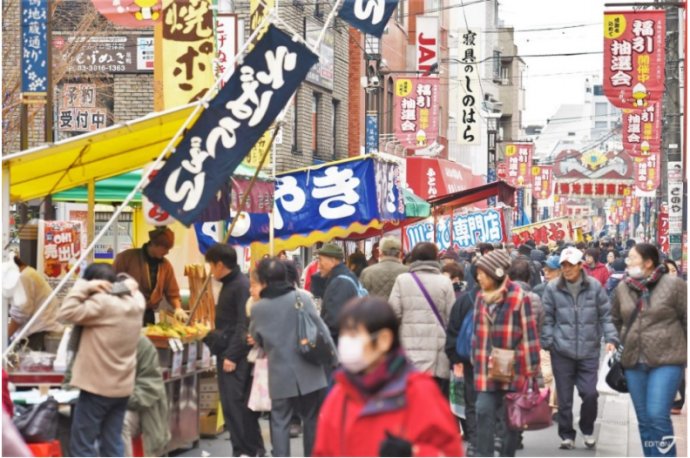
If Tokyo’s youngest and hippest trend-setters spend there time in Harajuku, where does the city’s older crowd like to go? Well, one popular spot among Tokyo’s elderly generations is Sugamo, earning it the funny nickname “Granny Harajuku.” But just because it’s popular with an older crowd doesn’t mean younger travelers shouldn’t bother visiting! Sugamo Jizodori Shopping Street is cheerful and lively, populated with shoppers both young and old, and lined with shops selling everyday clothing and food, along with some unique specialties. A common Sugamo souvenir is red underwear, so you’ll find shops specializing in all kinds of red undergarments. Get off the tram at Koshinzuka and don’t leave until you find your new lucky undies!
Sugamo Jizodori Shopping Street (巣鴨地蔵通り商店街)
4-22-8 Sugamo, Toshima City, Tokyo
Find Peace & Quiet in Central Tokyo
Kishimojindo Temple (鬼子母神堂)

As a Buddhist temple, Kishimojindo is a quiet oasis in the city, but take a closer look and you’ll find that it’s really not such a peaceful place after all. Believe it or not, the temple is actually devoted to a demon-goddess who goes by the names Kishimojin and Hariti, and legend tells us that when the demoness Kishimojin was converted to the Righteous Path by the Buddha himself, she became a mother-goddess and protector of children. Known to help with childbirth and parenting, Kishimojin is a popular goddess among young families to this day. But the character for demon (鬼) has never left her name in Japanese, and it seems like she might have never truly lost her fiery temper either, as this demon-goddess is also said to terrorize irresponsible parents and unruly children. Feel free to hop off the tram at Toden-Zoshigaya and visit her temple… but be on your best behavior.
Kishimojindo Temple (鬼子母神堂)
3-15-20 Zoshigaya, Toshima City, Tokyo
Hours: 9:00 – 17:00
Official Website (jp)
Higo-Hosokawa Garden (肥後細川庭園)
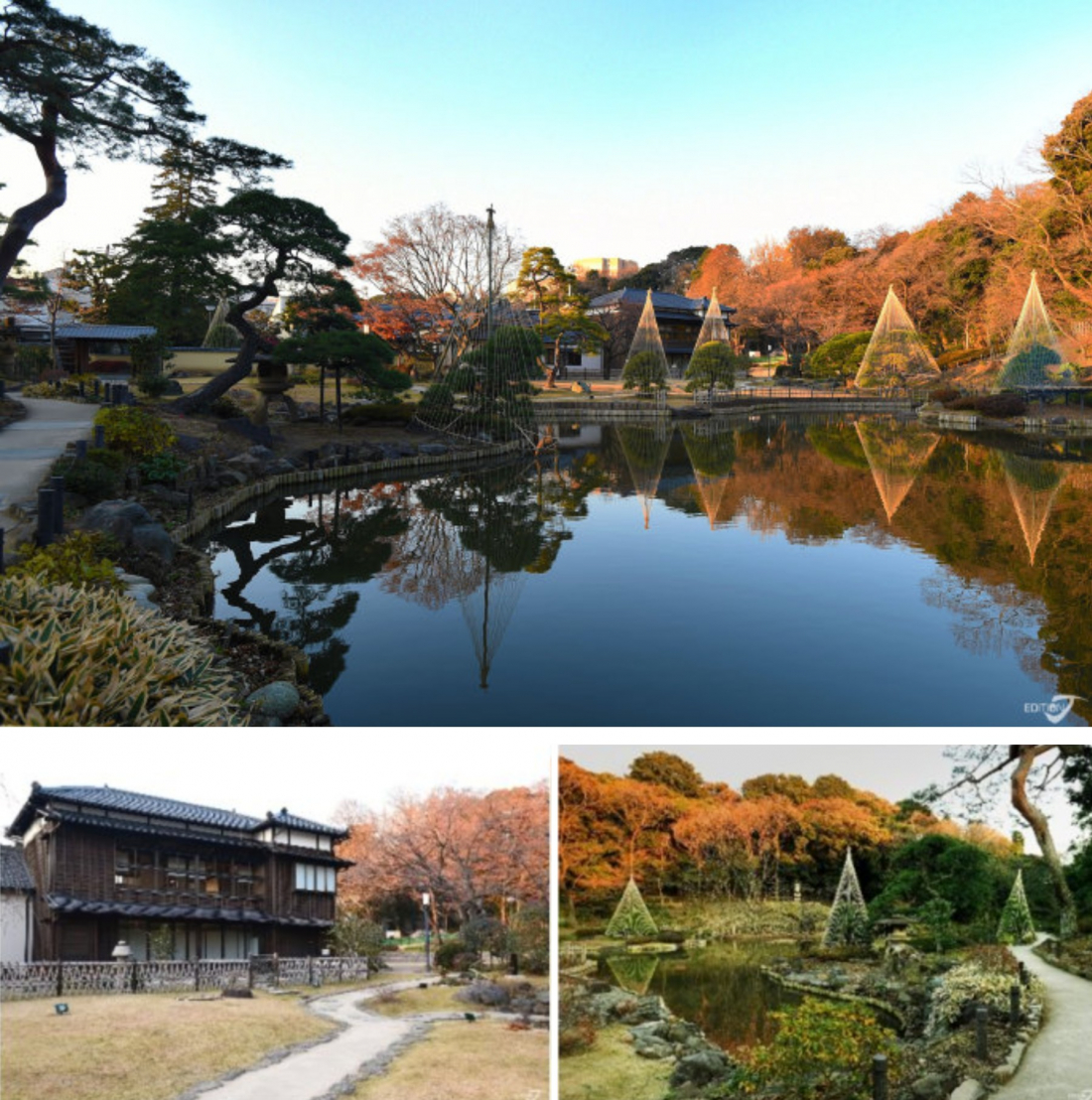
Now a lovely garden, this patch of land has passed through many hands in the past few centuries, giving it hundreds of years of history. For a time in the Edo period (1603-1868) it housed the shogun’s retainers, and by the time of the Meiji Restoration, the land was being used as the site of a second house for the Hosokawa family, whose main home was in Higo (present day Kumamoto). In the Edo period it was common for the shogun to demand that his vassals around the country regularly come to the capital so he could keep an eye on him, which is likely why the Hosokawa family built there house here. (Perhaps you’re beginning to see where the park’s name comes from.)
Nowadays the park has left its feudal roots behind, and although it has been landscaped into a very elegant garden, the grounds are open entirely for free to anyone who wishes to visit. Visitors can even order a cup of matcha to sit and sip as they enjoy the view. Take the tram to Waseda and walk to Higo-Hosokawa Garden to stroll around the pond, enjoy the seasonal plantlife, and soak up the peaceful atmosphere in the middle of Tokyo.
Higo-Hosokawa Garden (肥後細川庭園)
1-1-22 Mejirodai, Bunkyo City, Tokyo
Hours: 9:00 – 16:30
Official Website (jp)
Eat Arakawa
Cool Cafe (クールカフェ)

If you find yourself wondering “but what exactly is the name of this cool cafe?”, then we’d be delighted to tell you, the name of the shop is literally “Cool Cafe.” But this local spot might be better described as a Japanese kissa-ten, with their menu of Japanese-style Western food (called yoshoku/洋食) and homey interior. Get off the tram at Arakawashako-mae for lunch and try the juicy hamburger steak, served with rice and a side salad. Grab a seat outside if you can, to make the most of your time in Arakawa!
Cool Cafe (クールカフェ)
8-38-1 Nishiogu, Arakawa City, Tokyo
Hours: 10:00 – 17:00
Official Website (jp)
Hirasawa Kamaboko (平澤かまぼこ)
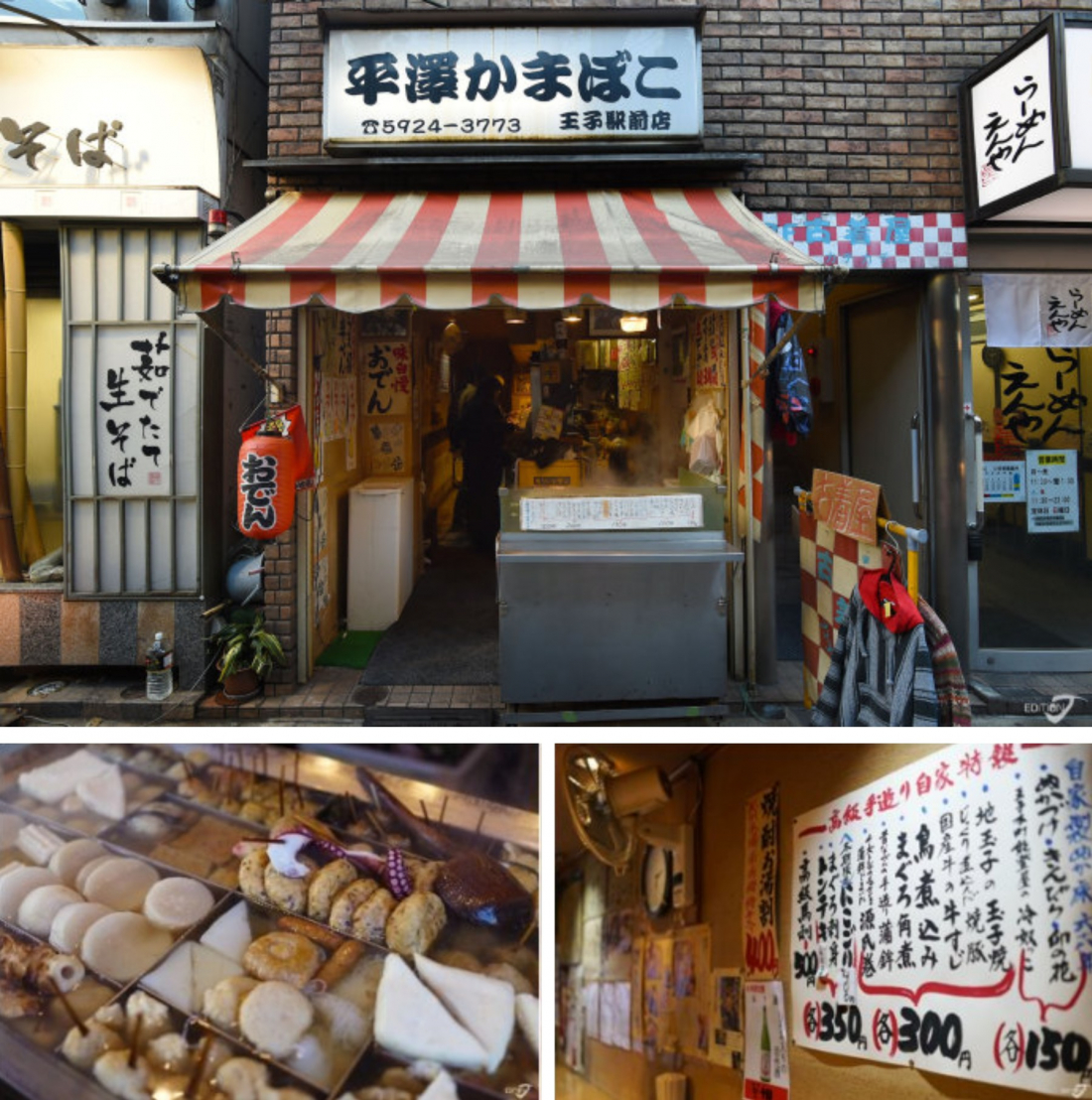
This little shop is about as local as it gets, with a cozy counter and plenty of people stopping in for a drink and a bite to eat at lunch or after work. After being featured on Japanese TV, Hirasawa Kamaboko now has plenty of customers arriving from outside the neighborhood, but the humble establishment still sticks to a simple menu focused on oden, a homey dish of varied ingredients stewed in a clear savory broth. As the shop’s name suggests, their specialty is fish cakes – an oden staple – but popular oden ingredients also include daikon radish, tofu, chicken meatballs, and much more. At the end of a busy day in Arakawa, head to Oji on the tram, and finish off the evening just like a local Tokyoite, with a cold drink and a hot dish of oden.
Hirasawa Kamaboko (平澤かまぼこ)
1-1-10 Kishimachi, Kita City, Tokyo
Hours: 11:00 – 22:30
Official Instagram
Enjoy Tokyo Like the Locals
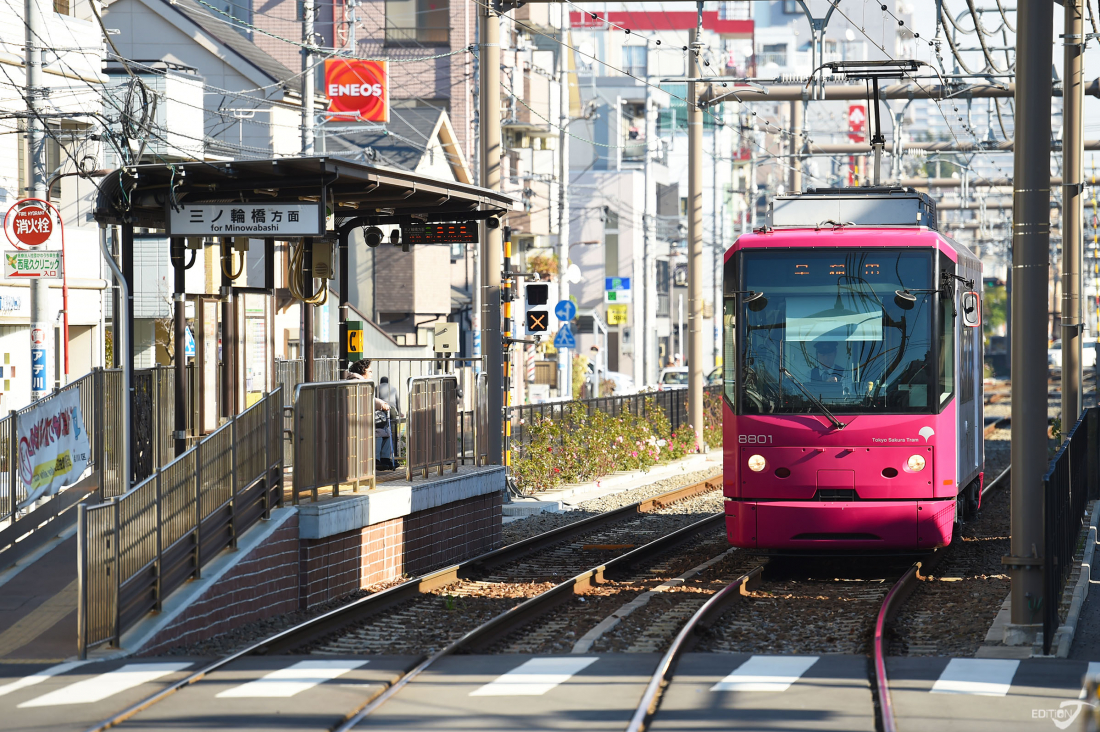
There’s nothing wrong with enjoying a day on the busy streets of Shibuya, or basking in the flashy nightlife of Shinjuku, but anyone who’s lived in Tokyo for a while knows that that’s not all the city has to offer, and now you know too! From temples with surprising backstories to mouth-watering retro restaurants, the Arakawa neighborhood has some surprising hidden treasures, and a day riding back on forth on the Toden-Arakawa tram is a unique experience you won’t find anywhere else. Next time you’re in Japan, to take a peek at another side of Tokyo, we’d recommend a little trip to Arakawa!
For more info and updates from Japan, check Japankuru for new articles, and don’t forget to follow us on X (Twitter), Instagram, and Facebook!
PROFILE
Half a lifetime ago I came to Japan for a semester abroad... and I never left. I guess I really like the place! I'd love to hear all your favorite things and recommendations in Tokyo via the @Japankuru instagram or twitter (X).
COMMENT
FEATURED MEDIA
VIEW MORE
・The new Tokyo flagship for Volcom Japan is a center for all things skateboarding, street fashion, art, and culture, all in the heart of Shibuya! ・Volcom日本旗艦店東京澀谷登場 本格派滑板街頭潮流藝文新據點 #Volcom #japankuru #shibuya #日本購物 #日本潮流 #日本街頭時尚 #澀谷 #東京購物 #東京購物推薦 #東京潮店 #澀谷潮店 #滑板 #雪板 #衝浪 #볼컴 #시부야

Which snacks make the best Japanese souvenirs?~ Jaga Pirika ~ 일본과자 선물 뭐하지?~자가피리카 편~ #pr #calbee #jagapokkuru #japanesesnacks #japanesefood #japanesesouvenir #japantravel #japantrip #naritaairport #hokkaido #나리타국제공항 #일본여행선물 #흔하지않은기념품 #일본쇼핑리스트 #일본과자추천 #고구마과자 #일본간식추천 #일본면세점쇼핑 #개별포장 #일본감자칩 #도쿄나리타공항면세점 #현지인추천 #일본여행 #일본기념품리스트 #자가포쿠루 #자가피리카

Asakusa's Sanja Matsuri, one of the biggest festivals in all of Tokyo, is almost here! Make sure you check out the festival route so you don't miss all the festivities this May. #asakusa #sanjafestival #sanjamatsuri #asakusashrine #sensoji #sensojitemple #japanesefestival #shintoshrine #japaneseculture #tokyo #tokyotrip #tokyotravel #asakusasightseeing #matsuri #japantrip #japantravel #springinjapan #tokyotravel #japankuru #산자마츠리 #아사쿠사 #일본마츠리 #일본여행 #일본5월

Odaiba's DiverCity Tokyo Plaza is home to the famous real-size 20m-tall Unicorn Gundam, and the popular shopping center has even more Gundam on the inside! Check out the Gundam Base Tokyo on the 7th floor for shelves upon shelves of Gunpla, and the Gundam Base Tokyo Annex on the 2nd floor for cool anime merchandise. Both shops have tons of limited-edition items! #pr #odaiba #tokyo #tokyotrip #japantrip #japantravel #PR #divercity #divercitytokyoplaza #tokyoshopping #gundam #unicorngundam #gundambasetokyo #anime #otaku #gunpla #japankuru #오다이바 #다이바시티도쿄 #오다이바건담 #건담 #일본건담 #건프라 #건담베이스도쿄

Evangelion, in miniature!? Tokyo's SMALL WORLDS Miniature Museum is actually a must-see for anime lovers, thanks to the tiny Evangelion Hangar and Tokyo-III... plus a whole universe of other scenes both real and fictional. #smallworlds #smallworldstokyo #tokyotrip #tokyotravel #evangelion #eva #anime #miniature #miniatures #animefigure #japantrip #japantravel #에반게리온 #스몰월드 #에반겔리온 #スモールワールズ #오다이바 #아리아케

Have you sat down for a snack at Sumida Aquarium yet? This aquarium next to Tokyo Skytree is known for its penguins and garden eels, but we can't get enough of their cute snacks! There are lots of good seats around the aquarium, too, so it almost feels like one big cafe. 🐧 • Find out more at Japankuru.com! (Link in bio.) • #japankuru #sumidaaquarium #skytree #tokyoskytree #solamachi #sumida #tokyo #tokyotrip #tokyotravel #aquarium #japanesesweets #themecafe #すみだ水族館 #Japan #日本 #일본 #Japon #ญี่ปุ่น #Japão #япония #japantravel #日本旅行 #日本旅遊 #japan_of_insta #japantrip #traveljapan #japan🇯🇵 #igerstokyo #explorejapan

For anime fans, the Evangelion areas at Small Worlds Miniature Museum are a must see! The tiny miniature people in the Evangelion Hangar look like ants beneath the moving Unit-01, Unit-00, and Unit-02! And over in Tokyo-III, characters like Shinji, Rei, and Katsuragi live life on a miniature scale. #odaiba #tokyo #tokyotrip #japantrip #japantravel #ariake #smallworlds #miniaturemuseum #smallworldstokyo #tokyotravel #evangelion #eva #anime #miniature #miniatures #animefigure #japankuru #스몰월드 #에반게리온 #오다이바 #오다이바관광 #오다이바스몰월드 #미니어쳐

